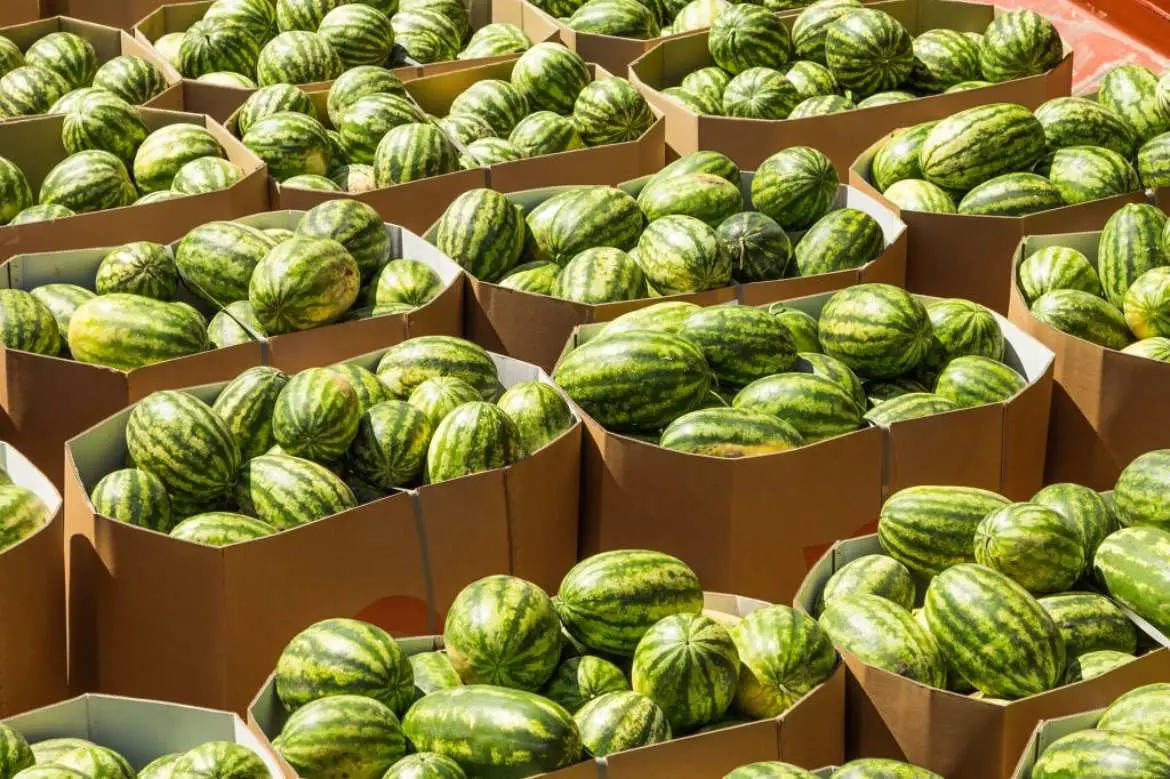There are still several months left in the year, but the record was already set – as of the end of July 2021, watermelon imports reached 46 thousand tons in Russia, while in 2020 a total of 38,3 thousand tons of watermelon was imported.
Thus, it is predicted that by the end of 2021, Russia will import more than 70 thousand tons of fresh watermelon for the first time, and the import volume will grow by about 80% over 2020.
Russia may even be able to double its imports of watermelons under certain conditions. Prices of watermelons were particularly low in Europe in 2021. Russia could not directly import watermelons from Ukraine, where farmers offered them from the field for free, but it was able to import them from Central Asia, where prices were also the lowest in recent years during the peak export in June-July.
Watermelons were sold at wholesale prices between $0.06 and $0.08 per kg in Uzbekistan in June-July. In Tajikistan, watermelons cost only $0.01-0.02 more per kilo. Georgia became one of the largest suppliers of fresh watermelon to Russia, where prices were slightly higher than in Central Asia – about $0.10-0.12 per kg. The Georgian suppliers, however, were able to take advantage of the lower transport costs to Russia.
During peak season in 2021, prices for watermelon in Russia were at the average level for recent years. Due to the growing supply, prices began to decline rapidly by the end of the season. A greater supply of watermelons was also evident in the late August-early September 2021 period, mainly due to the later start of the season.
Due to the high price in Russia and low price in the exporting countries, watermelons from Central Asia and Georgia were able to reach Russia in June-July. Therefore, in June, Uzbek vegetables and fruits were dominated by watermelons. Uzbekistan exported 11.2 thousand tons of watermelon to Russia in July, almost four times more than in June.
In comparison with Uzbekistan, Turkey used a different window of opportunity to export watermelons to Russia. It was a record for the supply of watermelon to Russia from Turkey in June when 9.7 thousand tons were exported from Turkey. Additionally, Kazakhstan, Azerbaijan, Tajikistan, and North Macedonia supplied more watermelons to Russia, while China, on the other hand, reduced its exports.
During the same period, the exports of watermelon from Russia decreased. Estonia, Lithuania, and Latvia saw decreased exports, primarily to the EU. For the first time in the last 11 years, low prices in Ukraine have led to the almost complete expulsion of Russian exporters from the Belarusian market. In spite of this, Russian exports of watermelons to Mongolia increased by more than 1,000 tons.

